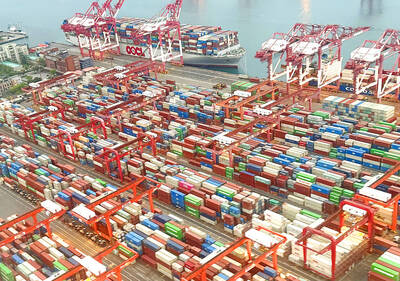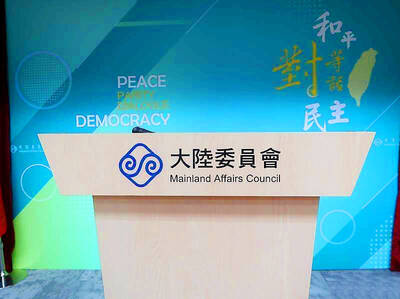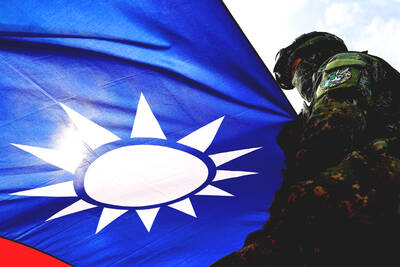China’s central bank yesterday handed investors a confidence booster, strengthening the yuan’s fixing by the most in three months and talking up the currency as markets reopened after the week-long Lunar New Year break.
The yuan had its biggest one-day advance since a peg to the US dollar was scrapped more than a decade ago, as the currency caught up with a decline in the greenback during the holiday. China’s balance of payments position is good, capital outflows are normal and the exchange rate is basically stable against a basket of currencies, People’s Bank of China (PBOC) Governor Zhou Xiaochuan (周小川) said in an interview published in Caixin magazine over the weekend.
The currency appreciated 1.25 percent, the most since July 2005, to 6.4954 per US dollar as of 4:36pm in Shanghai, according to data compiled by Bloomberg. The offshore yuan rose 0.14 percent to 6.4991, broadly in line with the onshore rate.
The Chinese central bank raised its daily fixing against the greenback by 0.3 percent, the most since November last year. A gauge of US dollar strength declined 0.8 percent last week, while the yen climbed 3 percent and the euro advanced 0.9 percent.
“In the near term, the stronger fixing and Zhou’s comments reflect the PBOC’s consistent view of stabilizing the yuan,” said Ken Cheung, a Hong Kong-based strategist at Mizuho Bank Ltd.
The nation’s foreign exchange reserves shrank by US$99.5 billion last month, the second-biggest decline ever, as the central bank sold US dollars to fight off yuan depreciation pressure.
An estimated US$1 trillion of capital left China last year, according to Bloomberg Intelligence.
G20 finance ministers and central bank governors are to meet in Shanghai on Feb. 26 and Feb. 27. China is likely to keep the yuan stable before the gathering, but allow the currency to drop mildly against the US dollar in the medium to long term due to weak fundamentals and capital outflows, said Qi Gao, a Hong Kong-based strategist at Scotiabank.
“The PBOC more or less judged the movements of the yen and the euro and saw that as a risk-off situation and fixed accordingly,” DBS Hong Kong Ltd managing director for treasury and markets Tommy Ong (王良亨) said.
The New Taiwan dollar yesterday closed up 0.3 percent, or NT$0.099, to NT$33.421 against its US counterpart in Taipei trading, as the greenback showed signs of weakness following US Federal Reserve Chair Janet Yellen’s dovish statements on interest rate hikes.
It is the highest level for the local currency since Jan. 6, after the yuan picked up 1.27 percent and the yen gained 2.68 percent during the nine-day Lunar New Year holiday, Taiwan’s central bank said in a statement.
The local currency rose to nearly NT$33 during the day’s trading, but lost steam toward the end, apparently due to the central bank’s intervention, a trader said on condition of anonymity.
There is not much room for the NT dollar to gain value, as a strong currency might hurt exports, which drive about 70 percent of the nation’s GDP, the trader said.
The South Korean won dropped 0.89 percent during the holiday, suggesting the undesirability and limit to the NT dollar’s appreciation, as both nations seek to beat each other in electronics innovations, the trader said.
Different research institutes have forecast the NT dollar will trade at NT$33.5 on average versus the greenback this year, as external demand might remain listless in the first half.
Additional reporting by Crystal Hsu

MORE VISITORS: The Tourism Administration said that it is seeing positive prospects in its efforts to expand the tourism market in North America and Europe Taiwan has been ranked as the cheapest place in the world to travel to this year, based on a list recommended by NerdWallet. The San Francisco-based personal finance company said that Taiwan topped the list of 16 nations it chose for budget travelers because US tourists do not need visas and travelers can easily have a good meal for less than US$10. A bus ride in Taipei costs just under US$0.50, while subway rides start at US$0.60, the firm said, adding that public transportation in Taiwan is easy to navigate. The firm also called Taiwan a “food lover’s paradise,” citing inexpensive breakfast stalls

TRADE: A mandatory declaration of origin for manufactured goods bound for the US is to take effect on May 7 to block China from exploiting Taiwan’s trade channels All products manufactured in Taiwan and exported to the US must include a signed declaration of origin starting on May 7, the Bureau of Foreign Trade announced yesterday. US President Donald Trump on April 2 imposed a 32 percent tariff on imports from Taiwan, but one week later announced a 90-day pause on its implementation. However, a universal 10 percent tariff was immediately applied to most imports from around the world. On April 12, the Trump administration further exempted computers, smartphones and semiconductors from the new tariffs. In response, President William Lai’s (賴清德) administration has introduced a series of countermeasures to support affected

CROSS-STRAIT: The vast majority of Taiwanese support maintaining the ‘status quo,’ while concern is rising about Beijing’s influence operations More than eight out of 10 Taiwanese reject Beijing’s “one country, two systems” framework for cross-strait relations, according to a survey released by the Mainland Affairs Council (MAC) on Thursday. The MAC’s latest quarterly survey found that 84.4 percent of respondents opposed Beijing’s “one country, two systems” formula for handling cross-strait relations — a figure consistent with past polling. Over the past three years, opposition to the framework has remained high, ranging from a low of 83.6 percent in April 2023 to a peak of 89.6 percent in April last year. In the most recent poll, 82.5 percent also rejected China’s

PLUGGING HOLES: The amendments would bring the legislation in line with systems found in other countries such as Japan and the US, Legislator Chen Kuan-ting said Democratic Progressive Party (DPP) Legislator Chen Kuan-ting (陳冠廷) has proposed amending national security legislation amid a spate of espionage cases. Potential gaps in security vetting procedures for personnel with access to sensitive information prompted him to propose the amendments, which would introduce changes to Article 14 of the Classified National Security Information Protection Act (國家機密保護法), Chen said yesterday. The proposal, which aims to enhance interagency vetting procedures and reduce the risk of classified information leaks, would establish a comprehensive security clearance system in Taiwan, he said. The amendment would require character and loyalty checks for civil servants and intelligence personnel prior to